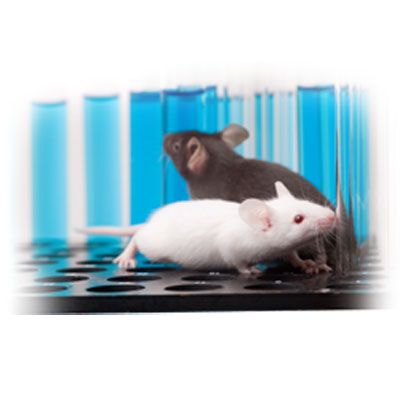Why Animals are Used
Animals are used in research when there is no other way to do the science. In places such as the UK and the EU, this is written into law and it is illegal to use an animal in research where there is a practical alternative.
There are four main reasons why animals are used in research:
To improve our understanding of biology
Fighting disease – in both humans and animals – depends on understanding biological processes which are sometimes very subtle and complex. Large parts of animal and human biology work in the same or in very similar ways, not just in vital functions such as breathing, digestion, movement, sight, hearing and reproduction but at the level of basic cell processes too. That means we can study how bodies work by running experiments in animals that would be impossible in human volunteers, and this is where most research animals are used. Studying how healthy bodies function often reveals what is happening when things go wrong.
Back to the topAs models to study disease
Humans and animals share hundreds of illnesses, so animals often act as models for the study of human disease. Mice, for example, suffer from many of the same cancers that afflict people, which is one reason why they are the animals most used for cancer research. Where there are differences, it is often possible to create an animal model which is close to the human condition. This may not be perfect, but it allows studies which would be impossible without animals, we cannot infect human volunteers with deadly diseases, after all.
The vast majority of animal models of disease are mice, but other animals are used too. Rabbits suffer from atherosclerosis (hardening of the arteries), as well as diseases such as emphysema, and birth defects such as spina bifida, for example. Dogs naturally suffer from cancer, diabetes, cataracts, ulcers and bleeding disorders such as haemophilia.
Back to the topTo develop and test potential forms of treatment
Many potential treatments work in theory, but they need to be tested in a living body to make sure they work in practice. Very often it is only possible to do this safely in an animal. A new vaccine that affects the genetic make-up of cells, for example – such as some of those developed to combat COVID-19 – can work very differently in the petri dish to the way it works in a living organism, and there may be hidden dangers lurking.
Before any new treatment is tried in humans, we will need data from animal studies to ensure it is likely to be effective and to help us understand what the side effects are likely to be.
Back to the topTo protect the safety of people, animals and the environment
New medicines require testing because researchers must measure both the beneficial and the harmful effects of a compound on a whole organism. A medicine is initially tested in vitro using tissues and isolated organs, but legally and ethically it must also be tested in a suitable animal model before clinical trials in humans can take place.
Back to the topLast edited: 15 February 2021 12:58

